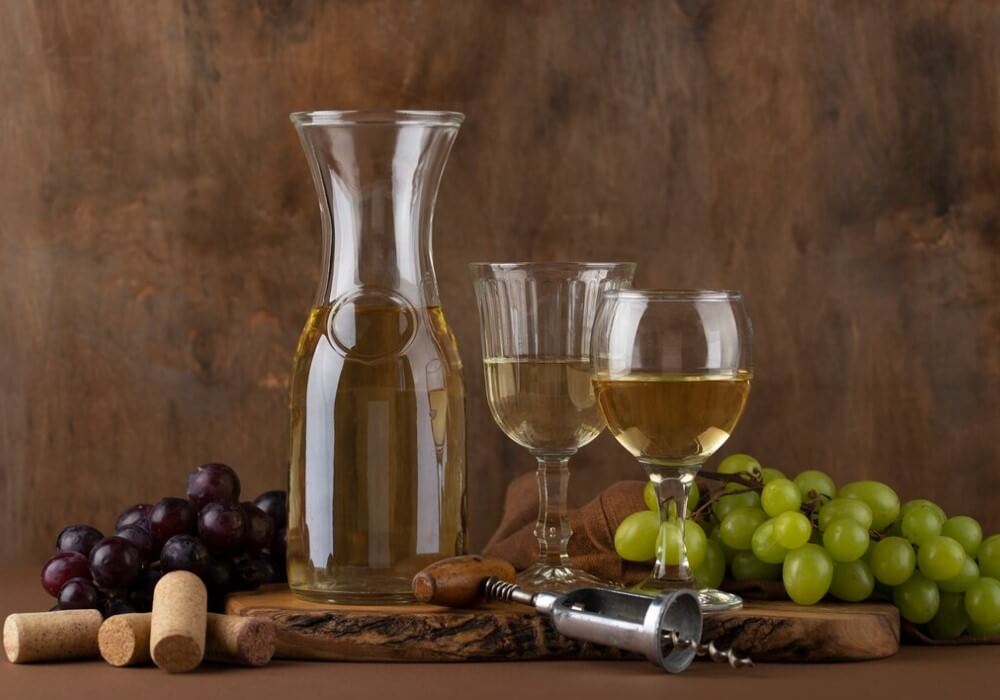Georgia, a country with a rich cultural heritage, holds a special place on the world map of winemaking. It is considered the birthplace of wine, where this noble beverage has been produced for millennia, dating back approximately 8000 years. Georgian wines offer a journey into the heart of ancient winemaking traditions. Here, where grapevines intertwine with the history and culture of the people, winemaking is an art passed down through generations. Utilizing unique methods that combine ancient knowledge with modern technologies, Georgian wines captivate the hearts of connoisseurs worldwide.
History of Georgian Winemaking
A journey through the history of winemaking in Georgia reveals a fascinating chronicle, illuminating not only the development of winemaking methods but also the significance of wine in Georgian culture and life. Let's delve into the epochs that have left their mark on Georgia's wine history:
- Neolithic Era: The beginnings of viticulture in Georgia trace back to the distant Neolithic period, around 6000 years BCE, when the first qvevris—symbols of Georgian wine making—were discovered in the eastern lands of the country.
- Bronze Age: Discoveries from the 3rd and 2nd millennia BCE, including objects made of gold, silver, and bronze adorned with grape imagery, confirm the ancient Georgians' strong connection to winemaking.
- Christianization Era (4th century): With the advent of Christianity, wine became an integral part of Georgia's religious and cultural life, symbolized by the cross made of grapevine carried by Saint Nino.
- Medieval Period: Wine production continued to play a significant role in Georgian society, evolving and advancing with each century.
- Soviet Era: During the Soviet era, Georgian wines gained widespread popularity, leading to the expansion of vineyards and increased production volumes. However, Mikhail Gorbachev's anti-alcohol campaign inflicted damage on many vineyards.
- Post-Soviet Revival: In response to the 2006 embargo by Russia, Georgia intensified the diversification of export markets and the improvement of wine quality, combining traditional and modern approaches to winemaking. This period marked a resurgence in international recognition of Georgian wines.
- Modern Era: Today, Georgian wine is esteemed for its unique production process in qvevris, recognized by UNESCO as part of humanity's intangible cultural heritage. Georgia successfully blends centuries-old traditions with cutting-edge technologies, fostering the growth and development of its winemaking industry.
Thus, the evolution of winemaking in Georgia serves as a testament to the nation's resilience, its pursuit of innovation, and its deep commitment to preserving heritage while seizing opportunities for growth and innovation in the global wine market.

Methods of Georgian Winemaking
The methods of Georgian winemaking encompass both ancient and modern practices, making this country a unique destination for wine production. The most well-known and traditional method involves the use of qvevris—large clay vessels buried in the ground for fermentation, aging, and storing wine. This method has been officially recognized by UNESCO as part of humanity's intangible cultural heritage and is practiced throughout Georgia, especially in rural areas.
In the process of Georgian winemaking in qvevris, grapes are pressed, and the juice along with the skins, stems, and seeds is placed into the qvevri, which is then sealed and buried in the ground for five to six months for fermentation. Alcoholic fermentation typically takes two to four weeks, followed by malolactic fermentation. Depending on the region and the producer's traditions, the suspension may be removed from red wines earlier than from white wines.
Traditional winemaking methods in Georgia vary from region to region, each with its unique characteristics and the use of local grape varieties. Kakheti is the most famous and largest winemaking region, known for its dry and semi-sweet wines. Kartli, Imereti, and Racha are also important winemaking regions, each with its own characteristics and preferences in winemaking methods.
Qvevris are not only used for wine production but also serve additional functions such as storage for brandy, grains, oils, cheese, and other products. Wines produced using qvevris are known for their stability, rich tannins, and do not require chemical preservatives to ensure longevity and excellent taste.
Modern technologies have also found their application in Georgian winemaking, allowing producers to experiment with combining traditional and innovative methods to create unique wines. This contributes to the development of wine tourism in Georgia, providing visitors with the opportunity to explore the diversity of Georgian wines and the culture of their production.
Wine in Georgia can be found practically everywhere. Simply visit a restaurant in Tbilisi, and you will be immersed in variety. Preserving the traditions of Georgian winemaking plays an important role in the country's cultural heritage, and many efforts are directed towards promoting sustainable winemaking practices.

The Process of Making Georgian Wine
The process of making wine begins with the extraction and purification of local clay, which is then shaped into qvevris. This process can take up to six weeks to create one 1000-liter qvevri. After the qvevris are formed, they are dried, fired in kilns, and lined with beeswax on the inside. Grape juice, skins, stems, and seeds are placed inside the qvevris, which are then sealed tightly and buried in the ground for five to six months for fermentation.
In addition to the traditional method, Georgian winemakers also employ modern technologies, including stainless steel tanks for fermentation and temperature-controlled equipment for aging. The combination of traditional and modern methods has led to the creation of a wide range of wines, from traditional qvevri wines to modern blends and varietals.
Georgia is renowned for its unique diversity of grape varieties, numbering over 500 types. Among the most well-known varieties are Saperavi, Rkatsiteli, Kisi, and Khikhvi, each with its unique characteristics and aromatic profile. The diversity of grape varieties is one of the key factors that make Georgian wine unique and sought after by wine enthusiasts worldwide.





